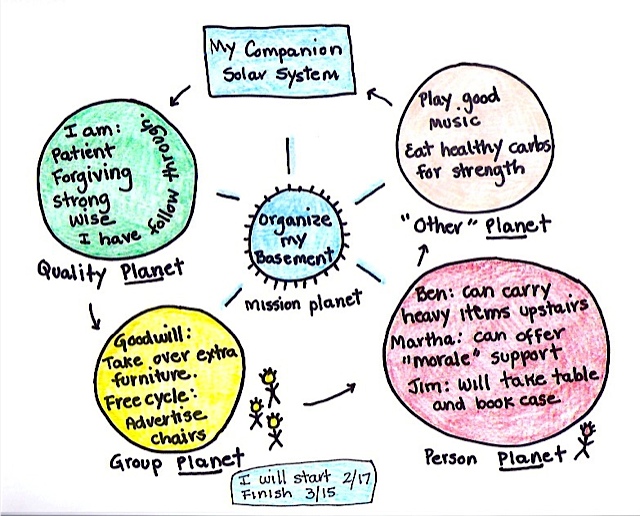
A partner is typically defined as a business associate, friend, spouse, family member, or support group. A good partner or companion can come in many different forms.
Alan Beck and Aaron Katcher studied the numerous physiological and psychological advantages of partnering with living creatures such as dogs, cats, an iguana, bird, or fish (Between Pets and People, The Importance of Animal Companionship). Dr. Carol Hughes suggests creatures cause a human response of relaxation, calmness, the release of beta-endorphins, a decline in cortisol levels, an increase in oxytocin, a decrease in a sense of isolation and loneliness, and an increase in connectedness. (http://www.drcarolhughes.com/Dr._Carol_Hughes/Animal_Assisted.html)
A good companion can be an inanimate object such as a good book, a healthy meal, or a comfortable chair. For instance, a man attributed his success to partnering with “the” good book (the Bible), and other inspirational, instructional texts. Other missions have been started and sustained by pairing with songs (We Are the World), a dance (Annahalprin.org and www.breathmadevisible.com), or a walk in the woods (Henry David Thoreau at Waldon Pond).
You can be your own good companion. How? By making yourself available to the good that is innate and within you. One author described this as, “The kingdom of God within.” You can partner with your own qualities such as joy, competence, compassion, understanding, and good will.
Whether it is a person, pet, inanimate object, or your own innate qualities, partner with a good companion and assure the success of your mission.
Quote
“I have always considered that choosing a companion for life was a very important affair and that my happiness or misery in this life depended on the choice.
- Ezra Cornell, Founder Western Union, Co-Founder Cornell University
Activity
Activity: The Solar System
Materials: Notebook size paper (8.5 x 11), erasable pen or pencil
Time: Ten minutes to do the exercise and ten minutes per person for discussion.
Instruction:
Pretend like you are creating a universe like the solar system.
1. Draw a small circle in the center of the paper. Call this the Mission Planet. Write down one mission you want to accomplish in the center of this circle.
2. Draw another circle. Call this the Person Planet. Write in that circle the person(s) you intend to partner with in order to accomplish your mission. Next to each name, put a note about what this person will contribute to your mission. Include a phone number if helpful.
3. Draw another circle. Call this the Group Planet. Write in the circle the groups that will help you complete your mission. Next to each group, put a note on how this group will help you accomplish your mission. Include a phone number if helpful.
4. Draw another circle. Call this "Other" Planet. List inside this circle other inanimate objects or things that will contribute to accomplishing your mission. (Such as a good lunch, a hammer, a corporate EIN number. See the example below.)
5. Draw another circle. Call this the Quality Planet. List inside this circle your specific innate qualities that will enable you to complete this mission.
6. Color, artwork, bling, can be added to the project. Artwork helps to galvanize the will into taking action.
7. At the bottom of the page put down a beginning and end date for this mission.
8. Discuss what you have learned from this lesson. Explain who or what is your most important partner/companion on your mission. You can put phone numbers on this paper and use it as a reference when you need support.
Example: A woman wanted to clean out her basement. Here is the image she drew.
Affirmation
I am partnered so I can ........ We'd like to hear your story about having a good companion and what that means to you. Write your story below.
- « Previous lesson: Grieving well: I can hold loss
- » Next lesson: Loved: I am cherished
